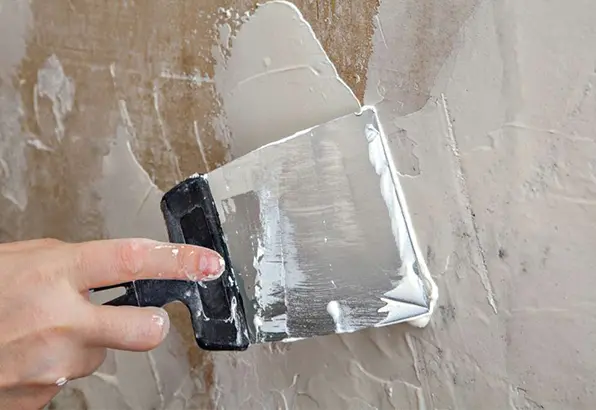In decorative sealants such as silicone sealants, polyurethane sealants, etc,Hydroxypropyl methylcellulose (HPMC)Mainly by regulating the rheological properties, water migration, and interactions with other components of the system, indirectly adjusting the curing speed and elasticity, the specific mechanism is as follows:
1、 Method of adjusting curing speed
The curing of sealant usually relies on moisture (such as the cross-linking reaction of silicone sealant that needs to absorb moisture from the air) or chemical reactions. HPMC affects the curing process through the following ways:
Control the rate of water infiltration
HPMC has excellent water retention properties, and the hydroxyl and ether groups in its molecular chain can form hydrogen bonds with water molecules, delaying the penetration of water into the adhesive layer. In single component sealant (such as room temperature vulcanized silicone adhesive), if the amount of HPMC is too high (such as exceeding 1.5%), it will slow down the speed of water reaching the depth of the adhesive layer, resulting in prolonged curing time; On the contrary, a low dosage of HPMC (0.3% -0.8%) can ensure the plasticity of the adhesive while allowing moderate moisture penetration, accelerating the gradual curing from the surface to the interior, and avoiding the formation of a "hard film" that hinders internal reactions due to rapid surface curing.
Choose low viscosity HPMC (such as 50-200 mPa · s), which has shorter molecular chains, weaker binding force on water, smoother water migration, and relatively faster curing speed; However, high viscosity HPMC (such as 10000 mPa · s or more) can significantly delay water penetration due to the tight entanglement of molecular chains, making it suitable for scenarios that require slow curing to reduce shrinkage cracking.
Optimize compatibility with curing agents
The etherification degree of HPMC (such as methoxy content of 28% -30%, hydroxypropyl content of 7% -12%) will affect its compatibility with curing agents (such as silane coupling agents, isocyanates) in sealants. High etherification degree HPMC has lower hydrophilicity and better compatibility with hydrophobic curing agents, which can avoid uneven distribution of curing agents caused by local aggregation, ensure uniform curing reaction, and reduce curing speed fluctuations.
If the sealant is a two-component system, HPMC can be pre dispersed in the curing agent component, and its dispersion particle size can be controlled (such as passing through a 100 mesh sieve) to avoid particle aggregation and hinder reaction sites, ensuring stable curing speed.
2、 Methods for adjusting elasticity
The elasticity of sealant depends on the crosslinking density, flexibility, and cohesion of the cured adhesive layer. HPMC works by improving the system's ductility and interfacial bonding strength
Flexibility of regulatory system
The ether bonds in HPMC molecular chains have a certain degree of flexibility and can be used as "molecular plasticizers" embedded in the cross-linked network of sealants. Low to medium degree of substitution HPMC (with low hydroxypropyl content) retains more hydroxyl groups on its molecular chain, which can form hydrogen bonds with polar groups in the sealant (such as silicone oxygen bonds in silicone adhesives and urethane bonds in polyurethane adhesives), enhancing intermolecular forces without significantly increasing crosslinking density. This makes the adhesive layer prone to deformation under stress and has strong recovery ability, resulting in improved elasticity.
Control the dosage of HPMC: When the dosage is between 0.5% and 1.0%, the ductility of the adhesive can be improved, and the elongation at break of the cured adhesive layer can be increased (such as from 300% to 400%); If the dosage is too high (more than 2%), the excessive entanglement of molecular chains will cause an increase in the rigidity of the adhesive layer, a decrease in elasticity, and even embrittlement.
Improve the dispersibility of fillers
Decorative sealants often add fillers such as calcium carbonate and talcum powder,HPMCThe surface activity can reduce the agglomeration between filler particles, allowing them to be uniformly dispersed in the adhesive material. A uniformly dispersed filler can form a "supporting skeleton" after curing, reducing local stress concentration during adhesive layer stress and improving elastic recovery performance (such as increasing compression rebound rate from 70% to over 85%).
Choose surface treated HPMC (such as modified with silane), which has better compatibility with inorganic fillers, can enhance the interfacial bonding force between fillers and adhesive matrix, and avoid elastic loss caused by interfacial peeling under stress.
3、 Collaborative regulation strategy
By compounding with other additives, HPMC can more accurately balance curing speed and elasticity:
Accelerate curing+maintain elasticity: Low viscosity HPMC (0.5%)+a small amount of drying agent (such as organotin compounds), which not only ensures the leveling of the slurry through HPMC, but also accelerates crosslinking using the drying agent. At the same time, the flexible segments of HPMC alleviate the brittleness caused by high crosslinking density.
Slow curing+high elasticity: High viscosity HPMC (1.0%)+plasticizers (such as phthalates), HPMC delays water penetration to prolong curing time, plasticizers work together with HPMC to increase molecular chain mobility and enhance the tensile modulus of the adhesive layer.
summary
HPMCThe core of adjusting the curing speed and elasticity of decorative sealants is to match the dosage, viscosity, and degree of substitution, combined with the interaction with moisture, curing agent, and filler to achieve: low dosage, low viscosity HPMC accelerates curing, medium low degree of substitution, and suitable dosage HPMC enhances elasticity. At the same time, targeted optimization is needed according to the type of sealant (silicone, polyurethane, etc.) and application scenarios (such as door and window joints, wall sealing) to balance construction efficiency, curing efficiency, and long-term elastic recovery ability.


TEL:+86 (0311) 8444 9786
Email:sales@double-bulls.com
Email:Export@double-bulls.com
Address:No.9 Weisi Road, Jinzhou City Eco-nomic Development Zone, Shijiazhuang City, Hebei Province.

Website

Brochure

Video